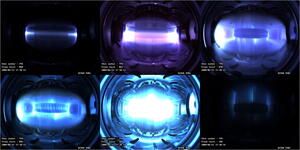KSTAR celebrates first plasma
On June 13th, the Korean Superconducting Tokamak KSTAR successfully produced its First Plasma with a plasma current of 107kA at a pulse length of 210ms. It went on to achieve a maximum current of 133kA and pulses as long as 389ms by the end of the first campaign on June 30th (see the press release below).
KSTAR's task is to test and study various techniques and technologies that will eventually be involved in the commercialization of fusion energy. It is also part of the ITER project.
Although it isn't at the core of the ITER mission, KSTAR has still achieved several milestones in physics and fusion energy production. It is currently the largest tokamak type reactor in the world, and it is one of the first reactors to use fully superconducting magnets of the same type as those that will be installed in ITER. KSTAR will study the use of both hydrogen and deuterium for potential fusion fuel sources, but is not intended to look into the use of tritium, which will be studied by the main ITER reactor once it has been completed.
"We are very happy to announce the successful event of KSTAR's First Plasma", said GS Lee, Director General of ITER Korea. "We appreciate all the help and contributions offered by the ITER Team in Cadarache as well as by the Domestic Agencies." Read the press release here.
On behalf of ITER Organization, Director-General Kaname Ikeda congratulated Joo-Shik Bak, Director of the KSTAR Research Center. "Knowing your people and how you built KSTAR I have been confident of this success but truly I appreciate your announcement of today. ITER certainly counts on your achievement and your further cooperation with the international fusion community."



